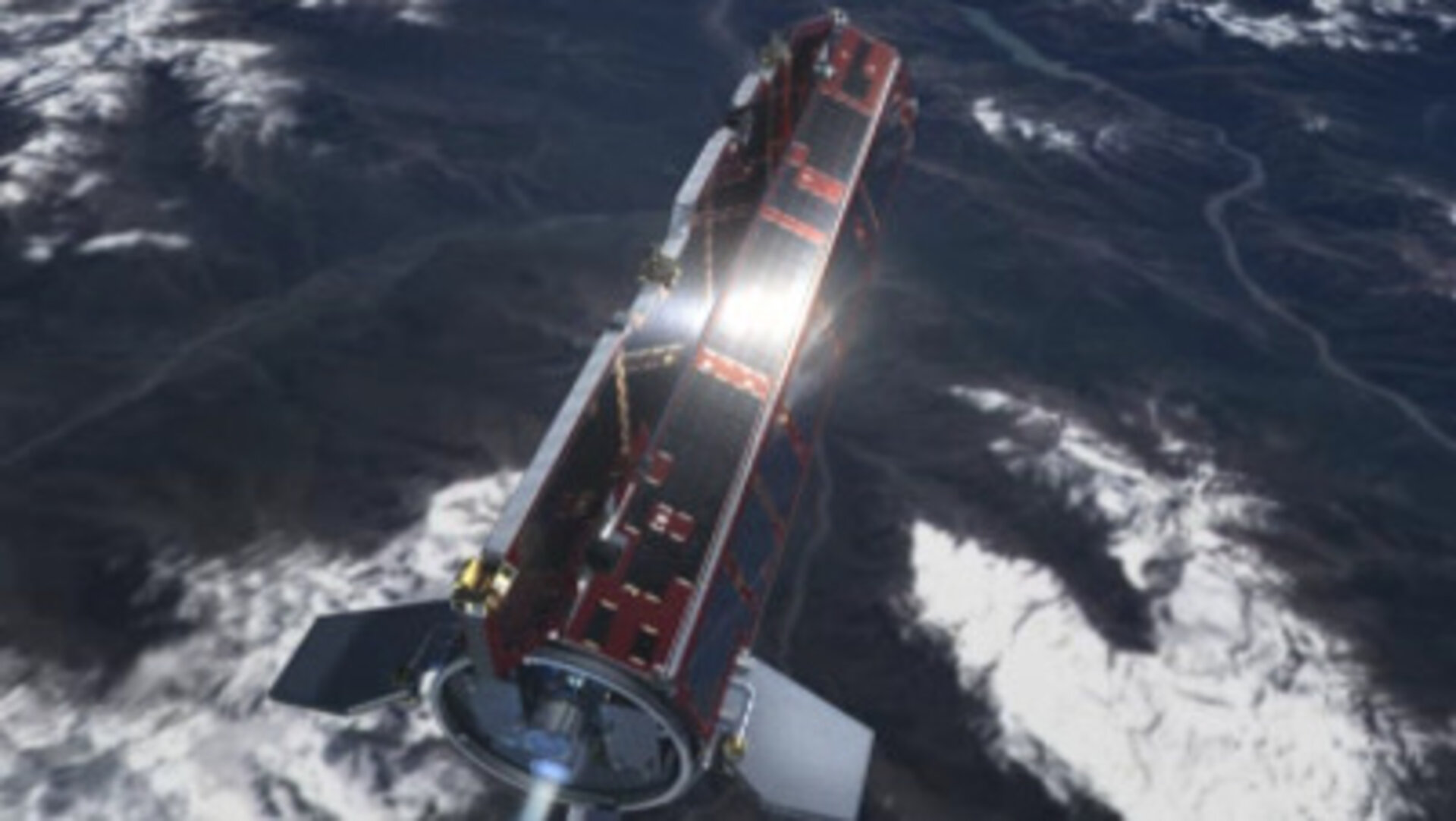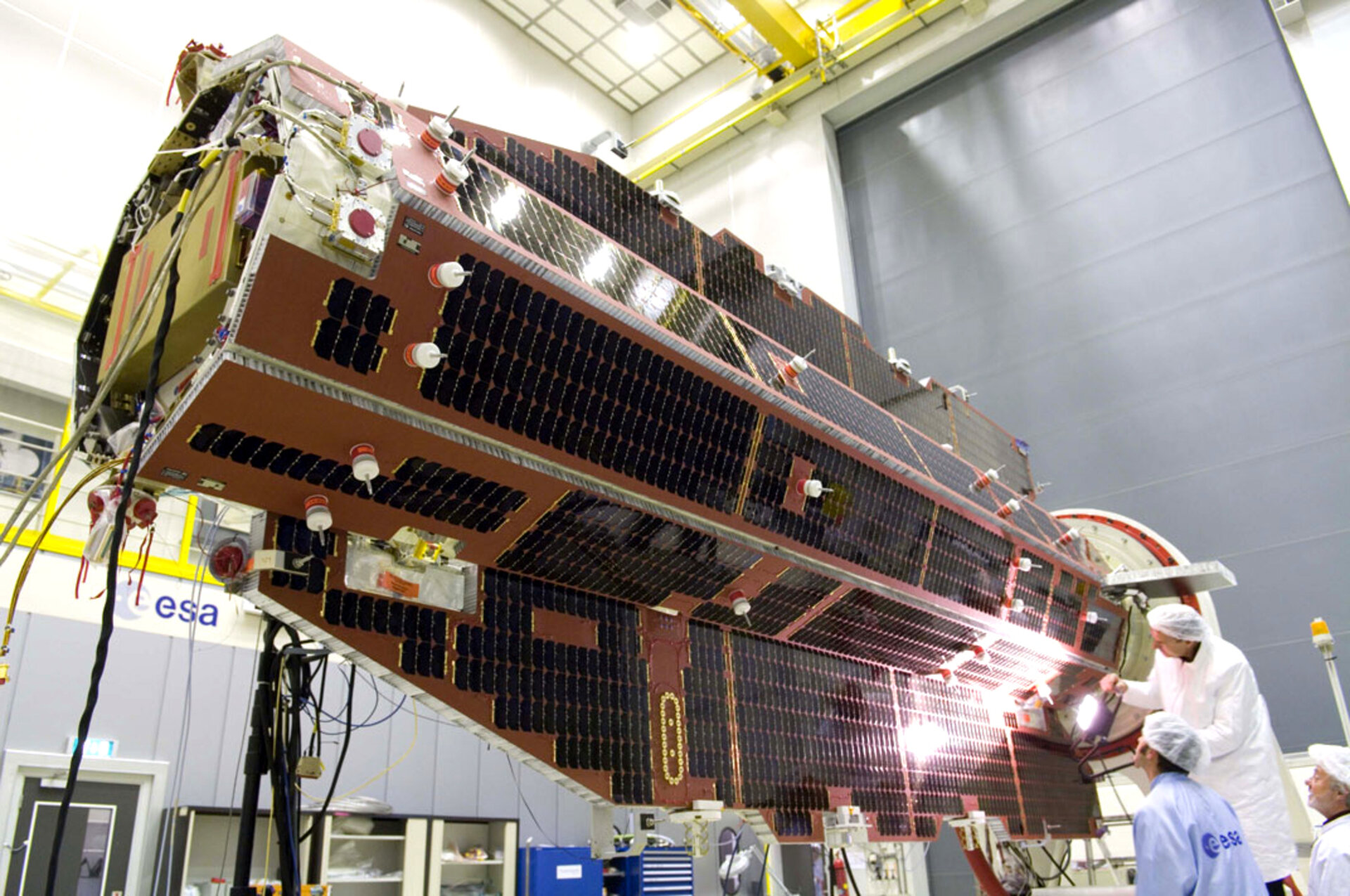Satellite
GOCE's sleek, elegant aerodynamic design – responsible for it being dubbed the ‘Ferrari of space’ – immediately set it apart from most other satellites.
Since it was vital to ensure that the measurements taken are of true gravity and not influenced by any movement of the satellite, this unique five-metre long arrow-shaped satellite had none of the moving parts often seen in other spacecraft. The satellite, together with its instrumentation, actually forms a single composite gravity-measuring device.
The satellite orbited Earth as low as possible to observe the strongest possible gravity-field signal – hence GOCE was designed to skim the edge of Earth's atmosphere at a height of about 250 km. Low fuel consumption meant that its altitude could be lowered to 235 km in 2012.
An electric ion thruster at the back of the satellite continuously generated tiny forces to compensate for any drag that GOCE experienced along its orbit.
The need to fly low and be ultra-stable led to a novel satellite design that minimised air drag and torque and excludes mechanical disturbances. The result was a slim 5 metre-long satellite with a cross sectional area of about 1m2, weighing in at about 1050 kg. The satellite was symmetrical about its horizontal plane and had two winglets that provided additional aerodynamic stability.


Access the video
In orbit, the same side of the satellite remained facing the Sun. The satellite was equipped with four body-mounted and two wing-mounted solar panels, which used triple junction Gallium Arsenide solar cells. Due to the orbit and satellite configuration, the solar panels experienced extreme temperature variations. The design, therefore, had to include materials that tolerated temperatures as high as 160°C and as low as -170°C.
The solar panels provide the necessary power for the satellite. At times when the solar array is not illuminated by the Sun, a lithium-ion battery delivers the power required.
One S-band communication antenna was mounted on each wing. One faced upwards and one downwards so that full spherical coverage was achieved. The wing that pointed towards space carried two GPS antennas.
The satellite comprised a central octagonal tube with seven internal floors that supported the equipment and electronic units. Two of the floors supported the gradiometer, which was mounted at the heart of the satellite close to its centre of mass. The spacecraft structure was built largely of carbon-fibre reinforced plastic sandwich panels to guarantee stable conditions under varying temperatures and at the same time to limit mass.
The satellite had to cope with large temperature variations – GOCE encountered two eclipse phases per year with maximum eclipses that lasted up to 30 minutes. Temperature control was achieved mainly through passive means such as coatings and blankets and active control by heaters where necessary. The internal equipment was protected from the hot solar panels by multilayer insulation blankets, which were positioned between the solar panels and the main body of the satellite.
The cold side, which faced away from the Sun, was used in part as a radiator to dissipate heat into space. The external coatings, in particular those situated in the direction of flight, were protected from high atomic oxygen flux, which would otherwise erode unprotected materials very quickly at this low orbit.
Owing to the need for stringent temperature stability (in the range of milli-Kelvin for the gradiometer sensor heads), the gradiometer was decoupled thermally from the satellite, having its own dedicated thermal-control system.






